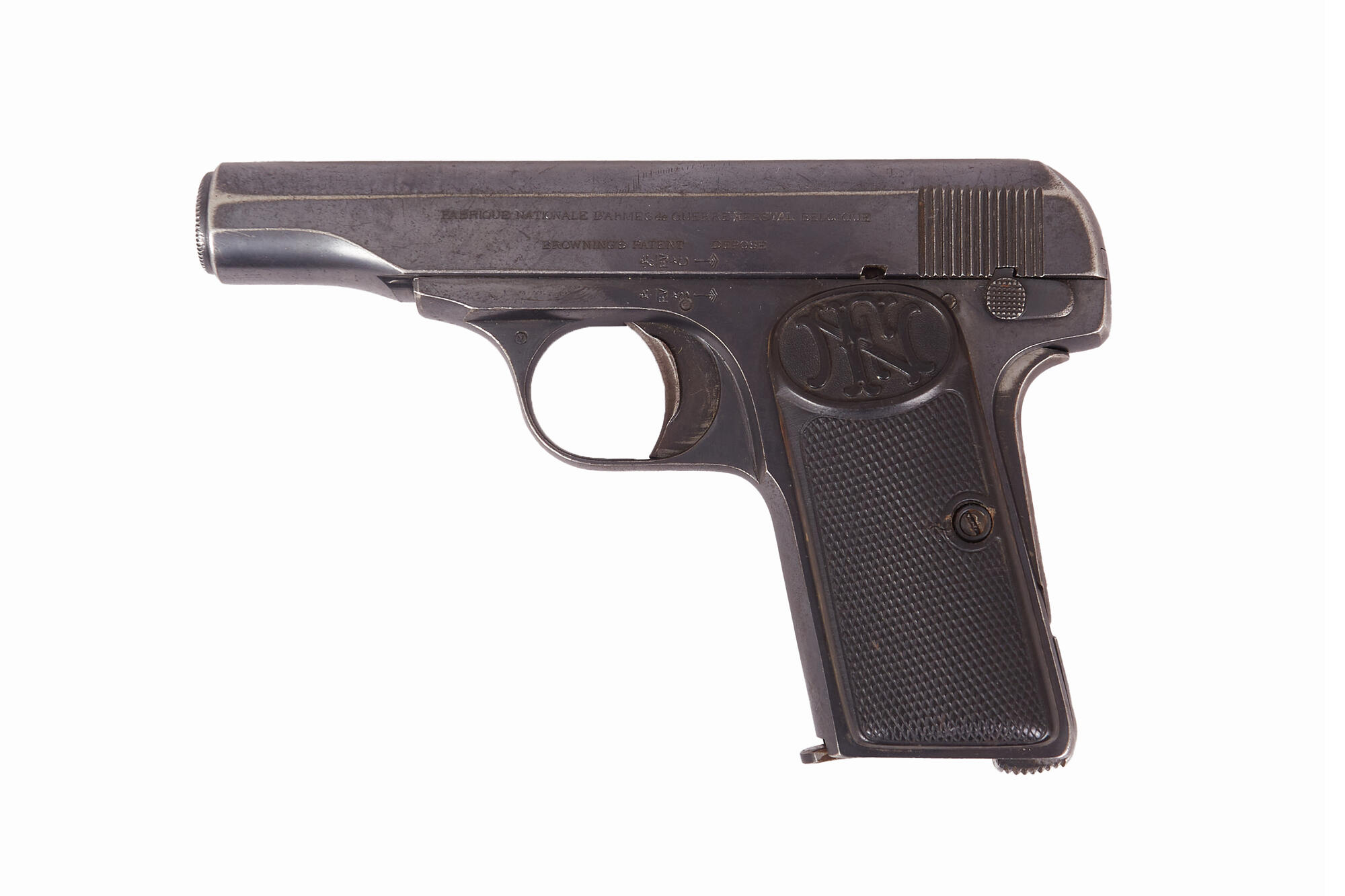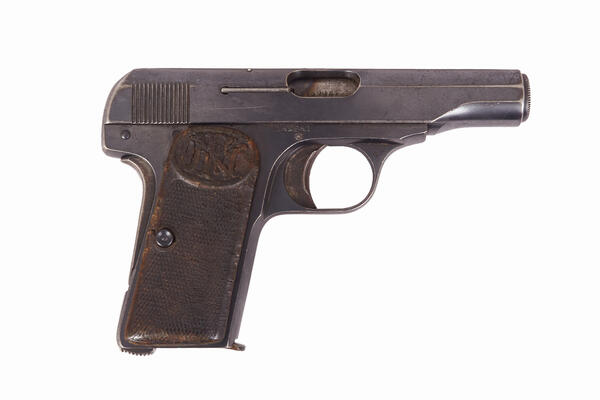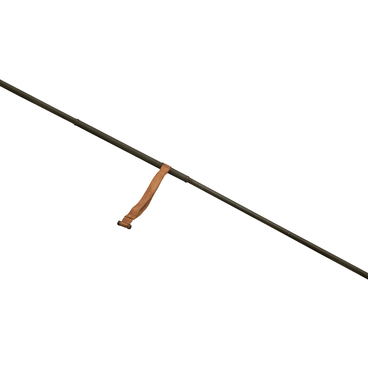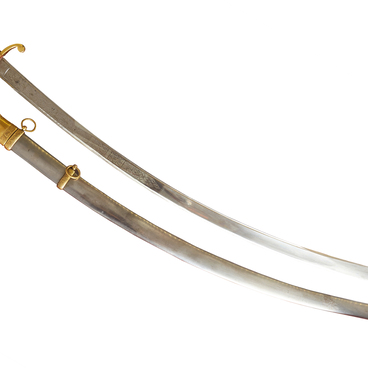The presented pistol played a crucial role in the First World War. It was with a pistol of this modification that on June 28, 1914, the Serbian terrorist Gavrilo Princip killed the Austrian Archduke Franz Ferdinand and his wife Sofia in Sarajevo. This shot was the direct precipitating event that led to the beginning of the conflict.
The Browning Model 1910, or, as it was called, the Browning Automatic Pistol, New Model, is a self-loading pistol designed by John Moses Browning. It was produced by the Belgian firearms manufacturer Fabrique Nationale d’Armes de Guerre (National Factory of Military Weapons) in the city of Herstal.
After entering the arms market, the Browning model 1910 quickly gained popularity. For instance, in the early 20th century any self-loading pistol was called “a Browning” in Europe and Russia. Pistols designed by John Browning were copied many times. For example, Fedor Tokarev, an outstanding small arms designer, used Browning’s inventions in creating the famous TT model.
The Browning 1910 pistol has smaller overall dimensions than its predecessors. This became possible due to a new design feature: the recoil spring is placed not under the barrel, as previously, but around the barrel of the gun. Sighting devices (iron sights) do not have sharp corners and do not protrude beyond the frame of the pistol, which allowed for concealed carry.
Another key feature of this model is its reliability: the pistol has three safeties: an automatic grip safety, a manual safety and a magazine safety. The Browning 1910 pistol has a total length of 153 mm, and the barrel length is 88 mm. The magazine can hold six rounds of 9 mm caliber or seven rounds of 7.65 mm caliber ammunition.
During its many years of service, the Browning
Model 1910 proved to be a high-quality, reliable and convenient weapon. It was
a popular weapon in the civilian firearms market and was used as an official
weapon by the police and military forces of a number of European countries.
Today it is highly sought-after among collectors.



